Find Kiteboarding Classes in Your Area
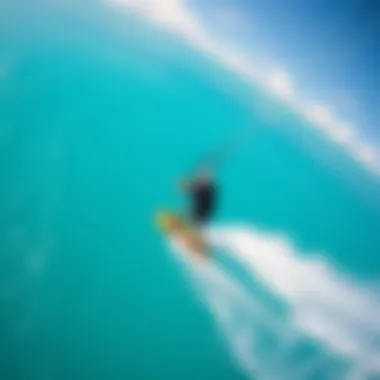
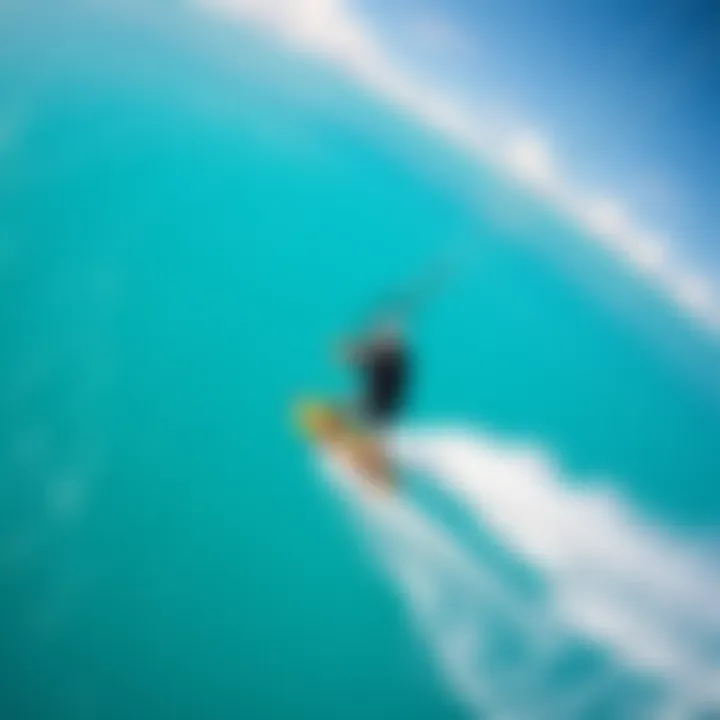
Intro
Kiteboarding is more than just a sport; it’s a thrilling adventure where wind and water dance to their own rhythm. The sheer excitement of harnessing the power of the wind to ride above waves can be indescribable. If you’re eager to dive into this fascinating world, finding the right kiteboarding class near you is the first step in your journey.
Understanding what to expect from these classes is crucial. Each instructor and school offers distinct styles and teaching methods, contributing to a variety of experiences that cater to different skill levels. The landscape is as diverse as the locales where kiteboarding takes place, blending the unique characteristics of each region with the essentials of the sport. From the sandy beaches of Maui to the windy shores of the Great Lakes, every environment shapes both learning and style.
This guide aims to equip you with the insights and knowledge needed to embark on your kiteboarding journey successfully. We will peel back the layers on equipment, explore essential techniques, and emphasize safety considerations that every kiteboarder must understand. Whether you’re a total beginner feeling the thrill of the wind or an experienced rider looking to refine your technique, there’s something here for everyone.
So, let's kick things off by taking a closer look at the gear that will not only keep you safe but also elevate your experience on the water.
Understanding Kiteboarding
Kiteboarding isn't just a thrilling water sport; it’s a lifestyle for many who find joy in harnessing the wind and riding the waves. Understanding the nuances of kiteboarding is crucial for newcomers and veterans alike. Learning the basics of the sport provides foundational knowledge that enhances both safety and enjoyment during your kiteboarding journey. Whether you plan to skim across the water like a seasoned pro or just wish to get your feet wet, grasping the essentials of kiteboarding can make all the difference.
Defining the Sport
Kiteboarding merges the exhilarating elements of surfing, windsurfing, and paragliding into one dynamic activity. Participants are towed by a large kite while maneuvering on a board over the water. One can say, quite fittingly, that” the kite is the engine, and the board is the vehicle.”
There are varying styles within kiteboarding, like freestyle, wave riding, and racing. Each style emphasizes different skills and techniques, catering to a diverse range of interests among kiteboarders. Understanding these different aspects will help you choose the right classes and instructors suited to your personal goals.
Another key point to note is the inherent element of nature in kiteboarding—mastering the wind and water to move with grace against the backdrop of the sea. This connection is what many enthusiasts find enriching; it’s not merely about navigating the waves but becoming attuned with the elements.
Kiteboarding Equipment Overview
A solid understanding of kiteboarding can't be achieved without knowing the essential gear involved. This equipment is not just for performance; it's also a matter of safety.
Kites
Kites are the lifeblood of kiteboarding. They come in various shapes and sizes, constructed from durable materials designed to catch the wind effectively. The primary attribute of a good kite is its ability to generate lift and control; it’s a tool that translates wind energy into forward motion.
One distinct feature of kites is their inflation system, which allows them to remain sturdy in strong winds. While smaller kites offer more control for tricks, larger ones can help beginners get started without overwhelming them. It’s essential to choose a kite that fits your skill level.
Boards
Boards function like the skateboard of the sea; they are pivotal in determining how you navigate. A board's shape and size greatly influence speed and maneuverability. For instance, twin tip boards are often favored for their versatility, allowing riders to go both forwards and backwards easily.
An interesting aspect of kiteboarding boards is the foot straps or pads that allow for secure footing — these can make or break your experience out in the water. Choosing the right board according to its flex and rocker is vital for performance, and that choice shapes your entire kiteboarding experience.
Harnesses
Harnesses, while often overlooked, serve as the connection between rider and kite. They help in distributing the pull of the kite more evenly across your body, reducing strain. There are two types: seat harnesses which offer support around the hips and waist harnesses that provide freedom of movement.
The key characteristic here is comfort. A well-fitted harness can make long sessions manageable. However, a poor choice could lead to chafing or lack of support, which can be less than ideal for a day on the water.
Wetsuits
Wetsuits are more than just fashionable swimwear; they are a fundamental part of kiteboarding gear. Depending on where you live, water temperatures can vary significantly. A quality wetsuit not only keeps you warm but also protects against abrasions and stings from the ocean.
One unique feature of wetsuits is their neoprene construction. This material traps a thin layer of water against your skin which is warmed by your body. However, wearing a suit that is too thick for warm weather can make for an uncomfortable experience — thus, understanding the right thickness for your conditions is essential.
The Importance of Instruction
When it comes to kiteboarding, the importance of proper instruction cannot be overstated. Learning this exhilarating sport without the right guidance can lead to unnecessary mishaps and could even dampen the thrill that kiteboarding offers. This section delves into why taking classes is essential, focusing on structured learning, safety practices, and the value of personalized feedback.
Benefits of Taking Classes
Structured Learning
Structured learning is like laying the groundwork for building a solid house. Just as a skilled crew follows blueprints to create a stable and durable structure, so too do students benefit from a well-organized curriculum in kiteboarding. Classes offer a logical progression where each lesson builds upon the last, ensuring learners grasp fundamental concepts before moving on to more advanced maneuvers.
One significant highlight of structured learning is that it eliminates the guesswork. Knowing what to expect each day allows students to prepare mentally and physically, making the entire experience much more manageable. A structured approach also often includes standardized assessments, giving both the instructor and learner a metric for understanding progress and areas needing focus.
Safety Practices
In any extreme sport, safety is the bedrock upon which everything else rests. Safety practices provided in kiteboarding classes cannot be taken lightly. Learning how to evaluate wind conditions, understanding how to set up the kite, and practicing emergency maneuvers are critical lessons that form an integral part of training.
The key characteristic of robust safety practices is prevention. By being trained on specific protocols, you drastically reduce the risks associated with a thrilling yet dangerous sport. Safety training often includes what gear to wear, how to check your equipment, and what signals to recognize when on the water. Without a doubt, this knowledge can help kiteboarders enjoy their passion without unnecessary stress.
Personalized Feedback
Another standout feature of taking classes is the chance to receive personalized feedback. During lessons, instructors can identify a student’s strong suits and areas needing improvement. This tailored approach accelerates skill acquisition, as students are better able to focus on what they struggle with, whether it's controlling the kite or mastering certain turns.
Personalized feedback is beneficial because it helps learners avoid the common pitfalls that could delay their progression. Unlike random advice from friends or uninformed online videos, focused feedback targets the unique aspects of a student’s technique, leading to more sophisticated riding sooner.
Choosing a Certified Instructor
Qualifications and Experience
When searching for a suitable kiteboarding school or instructor, the qualifications and experience of the instructors should be high on your priority list. Well-trained instructors bring a wealth of industry knowledge, which not only enhances the learning environment but also increases student safety.
The unique feature of having a qualified instructor is that they have often gone through rigorous training themselves, including first aid and emergency protocols. They are usually certified by recognized kiteboarding organizations, giving you confidence that you’re learning under a skilled professional’s guidance. While it might be tempting to choose the less expensive option, a qualified instructor offers added value that can be crucial during your learning journey.
Teaching Style
The teaching style of your instructor can significantly influence your learning curve. Some instructors have a more hands-on approach, while others might prefer theory-based sessions. Understanding what teaching style aligns with your learning preferences is essential.


The key characteristic here is adaptability. A good instructor recognizes that each student has unique responses to teaching methods, and they adapt accordingly. Investing time for a compatible teaching style can lead to a more pleasant and productive experience.
Student Reviews
Before signing up for classes, checking student reviews can be highly informative. Prospective learners should look for subjective feedback that conveys firsthand experiences. These reviews give prospective students insights that marketing materials simply cannot.
A standout feature of student reviews can be the consistency of feedback. If multiple reviews mention an instructor’s ability to create a welcoming environment or effectively communicate safety practices, it likely indicates a trend worth considering. Although some negativity in reviews can arise, patterns of consistent praise or concern will provide valuable hints regarding the instructor's effectiveness.
Finding Local Classes
Finding local kiteboarding classes is crucial for grasping the essence of this exhilarating sport. With so many options available, knowing where to look can save time, money, and even enhance your learning experience. Local classes connect you not just with instructors but also with the kiteboarding community, helping you build connections and gain insights from those who share your passion. The aim here is to empower you with the tools and knowledge needed to start your kiteboarding journey effectively.
Researching Schools
Online Directories
Online directories serve as a great resource in your quest for kiteboarding lessons. They compile a variety of schools and their offerings in one place, making them a popular choice. A key feature of online directories is their user-friendly interface, which often allows you to filter schools based on your location, skill level, and preferred class type. For example, websites like Yelp or TripAdvisor host numerous listings with reviews that may offer insights into the experiences of former students.
However, while useful, these directories can sometimes lack updated information. A school may have changed its offerings or instructors, yet this won’t always reflect online. Still, overall, they provide a great starting point for any aspiring kiteboarder.
Social Media Platforms
Social media platforms have evolved into significant avenues for finding kiteboarding classes. Sites like Facebook or Instagram allow schools to showcase their environments, lesson styles, and community events. The interactive aspect of social media means potential students can ask questions and get immediate feedback, creating a two-way communication channel that enriches the experience.
Yet, it’s also important to note that not all posts tell the full story. Schools can present a glamorous facade which might differ from reality. Therefore, while social media can help in gauging a school's vibe and community, it’s prudent to cross-reference findings with other sources.
Word of Mouth
Word of mouth remains one of the most reliable methods to find quality kiteboarding instruction. The local kiteboarding community is often full of members eager to share their recommendations based on firsthand experience. This organic form of communication is valuable because it reflects genuine opinions rather than marketing-driven narratives.
A unique feature of word of mouth is its personalized approach. Friends or acquaintances will usually share not just which school to attend but also what instructors to look out for. Although this method bears undeniable advantages, it can sometimes lead to a narrow perspective. Hence, combining personal recommendations with researched information may lead to a more well-rounded decision.
Evaluating Class Options
Group vs Private Lessons
When deciding on lessons, you will face the choice between group and private lessons. Group lessons can provide a social atmosphere and are typically less expensive. You'll learn alongside other enthusiastic students, which can enhance the motivation factor. However, individual attention may be limited in larger groups.
On the other hand, private lessons offer a tailored experience, allowing for a focused learning plan that suits your unique needs and skills. However, they tend to be pricier and might not come with the same sense of camaraderie.
Class Size
Class size significantly impacts the learning environment. Smaller classes generally provide more personalized instruction and quicker feedback from the instructor. On the other hand, larger classes can create a more competitive atmosphere but may dilute individual attention during lessons. Thus, balancing your desire for personal guidance with the social aspect can be critical in your decision-making.
Duration of Lessons
Duration of lessons varies greatly among different schools. Some offer bite-sized sessions of around one hour while others extend into multi-hour packages. A longer lesson may seem beneficial, giving you more time on the water, but it can also lead to fatigue, especially for beginners. It's essential to consider your physical endurance and overall learning objectives when evaluating these timeframes. Shorter, frequent sessions might be better for gradual skill development, while longer lessons can provide comprehensive exposure, albeit in a single sitting.
What to Expect in Classes
When you sign up for kiteboarding classes, it’s crucial to set your expectations right. Understanding what the lessons offer enables you to optimize your learning while ensuring a thrilling experience. Kiteboarding isn’t just about good winds and waves; it’s about developing core skills, learning safety protocols, and assimilating into the kiteboarding community. This harmony of fun and focus enhances both your enjoyment and safety.
Fundamental Skills to Learn
Kite Control
Kite control is perhaps the most vital skill when embarking on this exhilarating journey. It’s the cornerstone that dictates your ability to navigate the air and water harmoniously. A well-controlled kite reacts to your movements, allowing you to harness the wind effectively. A kiteboarder who masters kite control has an upper hand; they can adjust their posture and kite angles seamlessly, leading to smoother rides and better turns. The unique feature of this skill is its adaptability. Beginners might initially struggle with coordination, yet with practice, precision becomes second nature. However, the initial learning curve may lead to frustrations if your instructor doesn’t emphasize it enough.
Water Start Techniques
Next comes the all-important water start techniques. This method is the bridge between being a novice sitting idly in the water and becoming a proficient rider cruising confidently across the waves. Mastering this allows kiteboarders to get up on the board and start feeling the exhilarating rush of riding. Typically, instructors break this down into manageable steps and adapt to varying skill levels. A unique feature here is the importance of timing; synchronizing the kite's pull with your movements is essential. If done correctly, it can be a rewarding experience but might also lead to some tumble moments, challenging a learner’s patience.
Riding and Turning
Once kiteboarders conquer the water start, they delve into riding and turning. This skill combines speed and control, enabling riders to carve turns and navigate different wind conditions. More experienced kiteboarders thrive on these abilities, showcasing their agility as they twist and turn through the waves. A standout characteristic of this skill is the sensation of freedom it provides. However, it requires understanding wind dynamics and board positioning. For some, this could mean additional lessons to ensure safety and control.
Health and Safety Protocols
Pre-Lesson Briefing
Before diving into the sea, the pre-lesson briefing sets the stage for a safe and informed class experience. This briefing often covers critical aspects of the day’s lessons, including potential hazards and essential safety procedures. As part of kiteboarding education, briefing fosters awareness and prepares participants mentally for the day’s activities. The primary benefit of this approach is that it minimizes risks and enhances confidence among learners. However, if not enough time is dedicated to these briefings, new students might feel overwhelmed as they hit the water without sufficient knowledge.
Emergency Procedures
In the realm of adventure sports like kiteboarding, understanding emergency procedures is paramount. These procedures outline what to do in case of equipment failure, sudden weather changes, or injury. During your classes, instructors will focus on teaching these crucial protocols, ensuring that you’re not only a capable kiteboarder but also a responsible one. A key advantage of grasping emergency methods is the peace of mind it grants. But the downside may arise if students do not take the training seriously, which can lead to dire consequences when faced with unexpected situations while riding.
Personal Safety Gear
Investing in the right personal safety gear is another critical aspect of kiteboarding that classes will address. It includes items like helmets, impact vests, and harnesses. Instructors often have recommendations based on personal experience, helping you choose gear that suits your style and riding conditions. The distinctive feature of quality gear is how it can enhance both comfort and safety, allowing participants to focus on mastering their skills rather than worrying about potential injuries. If students overlook this integral part of kiteboarding, it might lead to unpleasant experiences that could have been easily avoided.
Assessing Your Progress
To truly thrive in kiteboarding, understanding your progress is key. This sport is not just measurable by how far you can glide across the water, but also by how comfortable you feel while doing it. Assessing your progress helps you identify strengths and weaknesses, aligning your skills to your goals.
The evaluation process is as crucial as learning to ride itself. It gives you ongoing feedback that can enhance your learning experience. At the end of the day, the journey is just as important as the destination. Knowing where you stand can motivate you to push further and ensure that every kiteboarding session counts.
Skill Assessment Frameworks
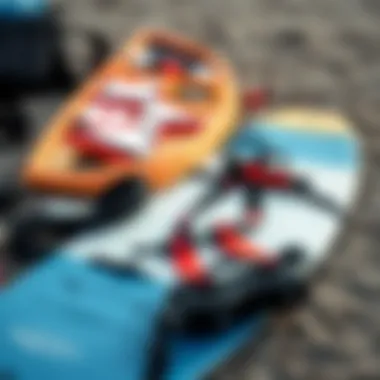
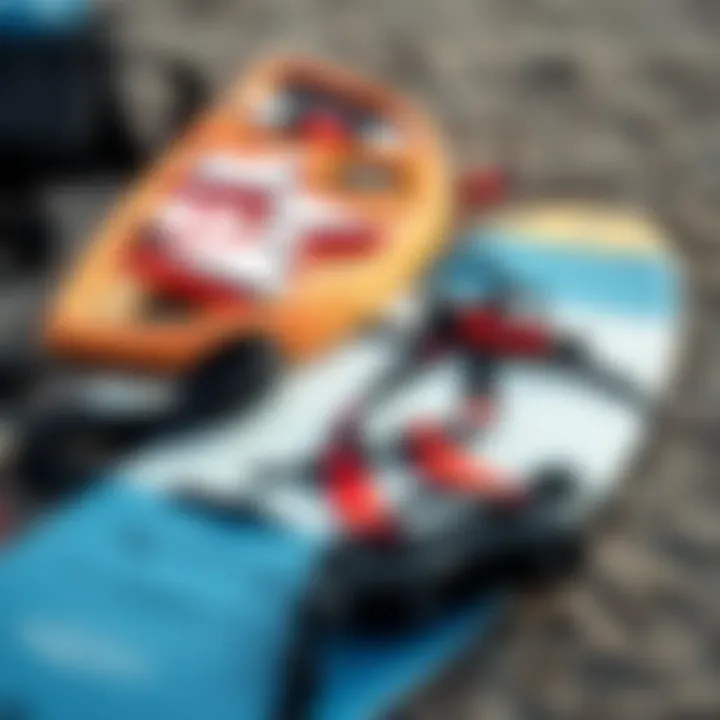
Beginners
For those just taking their first steps into the world of kiteboarding, the beginner level is a foundation stone. Here, learners focus primarily on the basics: understanding kite control, learning how to launch safely, and mastering the early water starts. The crux of being a beginner lies in getting comfortable on the board while controlling the kite effectively.
The standout feature of this level is that it emphasizes safety and gradual skill acquisition. This approach allows newcomers to grasp the essentials while minimizing risks, which is crucial for fostering confidence. However, beginners might find it frustrating sometimes, especially when they feel they’re not making rapid strides. Over time, with practice, these initial hurdles give way to breakthroughs, rewarding persistence.
Intermediate
Intermediate kiteboarders have collected a sprinkle of experience under their belts. They typically know the ropes of basic maneuvers but still face exciting challenges. This stage might include refining techniques for turns, jumps, and other maneuvers that push their limits beyond basic water starts.
Characteristics of intermediate kiteboarding include increased independence and self-assessment. Progress at this level becomes increasingly visual and experiential, allowing riders to appreciate their advancements. However, it can also breed impatience as individuals seek to master more complex tricks. The unique feature of this level is the transition from learning fundamentals to refining skills. It’s a phase where students really find their personal style, but the pressure to advance can sometimes dampen enthusiasm.
Advanced
Advanced kiteboarders find themselves in an exhilarating space, often incorporating a myriad of tricks into their sessions. Here, it’s about nuances—like perfecting jump height and style, executing complex aerial tricks, or even tackling extreme conditions. By this point, many riders have a solid understanding of their own capabilities as well as the sport’s demands.
What distinguishes advanced kiteboarding is the level of creativity and personal expression involved. Kiteboarders push boundaries, experimenting with combinations or new tricks. While it’s thrilling, it can come with its own set of challenges, such as the risks of injury or the frustration of failing to nail a new trick. Nevertheless, those at this level often find joy in the freedom and exhilaration of mastering their chosen sport.
Progress Tracking Techniques
Personal Reflection Journals
Keeping a personal reflection journal is an underrated technique for tracking one’s progress in kiteboarding. This method allows riders to articulate their experiences and thoughts after each lesson or session. Over time, these journals can showcase individual growth and areas needing attention.
The primary attribute of these journals is the self-awareness it fosters. Riders can look back and see the evolution of their skills and mindset. It offers a space for self-critique without the pressure of immediate feedback. However, it's worth noting that maintaining a journal requires consistency and commitment, which might sometimes be a hurdle for busy kiteboarders.
Goal Setting
Setting realistic goals is another effective way of gauging your progress. This strategy empowers individuals to set tangible objectives, be it mastering a new trick, improving speed, or enhancing kite control. Categorizing goals into short-term and long-term helps provide clearer pathways and a sense of direction.
A standout point about this technique is the motivation and focus it instills. With clear targets in sight, riders are more likely to remain committed to their practice. On the downside, the pressure of meeting goals can sometimes cloud the enjoyment of the sport, leading to disappointment if the goals aren't met promptly. It’s essential to balance ambition with enjoyment.
Instructor Feedback
Instructor feedback is a significant ally for kiteboarders aiming to hone their skills. Good instructors not only highlight areas for improvement but also offer praise where deserved, providing a well-rounded assessment of a student’s ability. Learning from experts can accelerate progression tremendously.
What makes this valuable is the external perspective instructors provide. They often see things novices may miss, helping refine execution and technique effectively. However, it’s crucial that students remain open to constructive criticism, as it can sometimes be hard to hear. Finding an instructor whose feedback aligns with one’s personal learning style is essential for fostering growth in this highly technical sport.
The Role of Community
Kiteboarding is not merely about mastering the wind and water; it is also about becoming part of a vibrant community that shares a common passion. Surrounding oneself with like-minded individuals who are equally thrilled about the sport enriches the learning journey. The community plays several pivotal roles – from offering camaraderie to providing support during learning curves. It can also make the experience more pleasurable and grounded.
Connecting with Other Kiteboarders
Connecting with fellow kiteboarders opens doors to a variety of experiences and opportunities to improve. Whether through local clubs, online forums, or social media communities, the benefits of these connections are manifold.
Local Clubs and Groups
Local clubs and groups serve as the backbone of the kiteboarding community. These entities often organize events, group lessons, and outings which can enhance the kiteboarding experience significantly. One notable characteristic of local clubs is their ability to foster friendships; participating in group events means having a support system that cheers for your progress and assists during challenges.
A unique feature of local clubs could be their focus on community engagement, promoting not just skill development but also a sense of belonging. On the downside, the accessibility of these clubs may vary based on location, and not every area might have an active kiteboarding club available.
Online Forums
Online forums provide a digital space where kiteboarders can connect regardless of geographical limitations. Here, enthusiasts exchange tips, share experiences, and discuss equipment. One major characteristic of online forums is the wide range of voices and experiences that come together to create a rich dialogue about the sport.
A valuable aspect of these forums is that they are often free to join and can host numerous threads on various topics. However, one must be cautious, as the quality of advice may vary, and misinformation can circulate just as freely as helpful guidance.
Social Media Communities
Social media communities offer a more casual, visual approach to connecting with other kiteboarders. Platforms like Facebook and Instagram enable individuals to share their experiences, post photos, and engage with the community in real-time. A hallmark of these communities is the immediacy of communication and the ability to witness others’ kiteboarding journeys through vivid imagery and videos.
A unique feature of social media is the potential for real-time feedback on one’s skills from peers worldwide, which can be both encouraging and enlightening. However, the downside might be the pressure to perform, as images of success can sometimes overshadow personal progress.
Participating in Events
Participating in events takes community engagement a step further. Events can range from competitions to casual meetups, each serving a different purpose in the kiteboarding community.
Competitions
Competitions, big or small, challenge kiteboarders to push their skills to the next level. These events not only foster a spirit of rivalry but also create opportunities for kiteboarders of all levels to showcase their abilities. A defining characteristic of competitions is the competitive atmosphere, which can be both thrilling and nerve-wracking.
The unique feature of competitions is that they often serve as an excellent platform for networking and meeting industry professionals. However, the cost of entry and fear of failure may deter some from participating.
Meetups
Meetups are often less formal than competitions, but they provide a fantastic way to connect with other kiteboarders in a relaxed environment. These gatherings often involve planned activities, promoting both fun and skill development. An essential characteristic of meetups is the social aspect; they allow newbies to mingle with seasoned veterans.
One exciting feature of meetups is the simplicity in organizing them – they can often be set up through local clubs or online groups. The main disadvantage may be that there’s no structured learning; beginners might find themselves at a loss if they don’t have a mentor present.
Workshops
Workshops offer focused skill-building sessions that can be incredibly beneficial for those wanting to improve quickly. These are often led by experienced instructors and sometimes feature guest experts. The key characteristic of workshops is the hands-on experience, which allows participants to dive deeper into techniques.
A unique benefit of workshops is often the small group sizes, which facilitate personalized attention and tailored feedback. However, the downside can be the cost associated with attending specialized workshops, which might not be feasible for everyone.
Engaging with the kiteboarding community, whether through clubs, online forums, or events, can greatly enhance your learning experience and foster lifelong friendships.
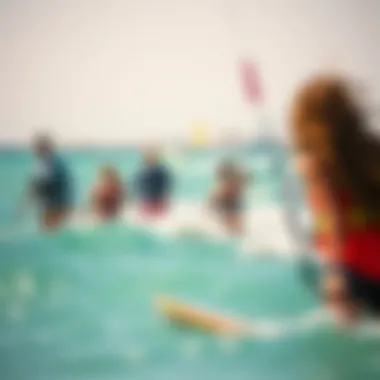
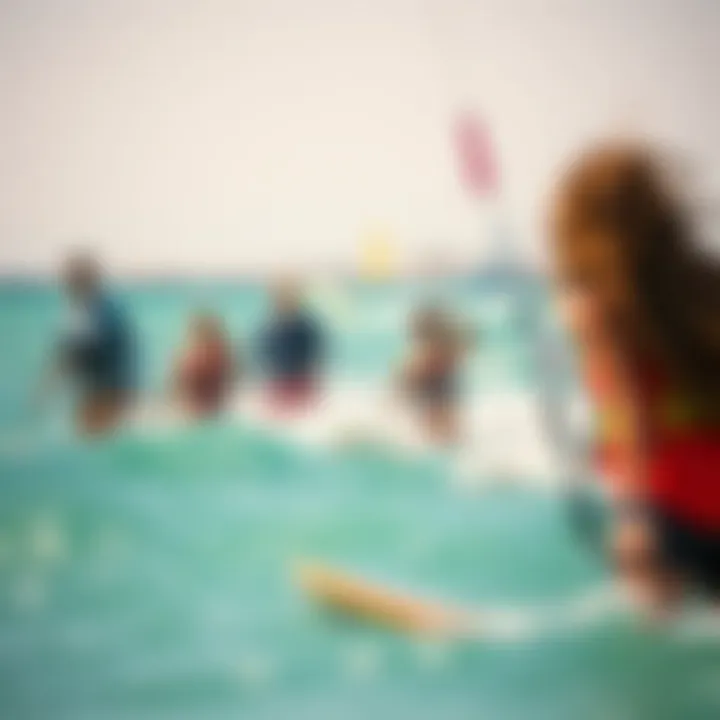
Connecting with others and participating actively can be just as important as the lessons learned in the water.
Commercial Considerations
Understanding the commercial side of kiteboarding classes is essential for anyone looking to embark on this thrilling journey. It’s not just about catching wind in your sail; it involves planning your budget, considering seasonal factors, and adapting to the local kiteboarding environment. This section unpacks different pricing structures and examines how weather conditions can significantly influence both availability and experience.
Cost Analysis of Lessons
Average Lesson Pricing
When diving into the world of kiteboarding, the cost of lessons is one of the first things that can stop you in your tracks. Average lesson pricing can vary widely based on your location, instructor experience, and even the specific school you've chosen. Typically, you might find prices ranging anywhere from $75 to $200 per lesson. The most popular offerings tend to hover around the $100 mark. This balanced pricing allows newcomers to justify the investment, hoping that their time on the water will yield skills that pay off in the long run.
While many instructors offer one-on-one sessions, attending group lessons can can cut costs down significantly. This aspect can make learning kiteboarding not just feasible, but also a community-building experience as you'll likely find yourself among other aspiring enthusiasts. However, one should keep in mind that pricing can fluctuate based on the instructor's reputation and the lesson duration.
Package Deals
Package deals are often a smart choice for those serious about kiteboarding. These typically include multiple lessons for a discounted rate, sometimes bundling gear rental as an added incentive. A common offering could entail five lessons for the price of four, meaning you save money while ensuring that you continue to practice consistently. The nearly candid approach of package deals fosters a sense of commitment, encouraging participants to harness their skills over time.
However, it’s worth noting that not all schools offer equally structured packages. Some might impose expiration dates on the lessons or limit how many can be scheduled in advance, which can affect your learning journey. Therefore, due diligence is essential when evaluating potential options.
Seasonal Discounts
Every kiteboarder knows that seasonal discounts can be a game-changer. Schools often reduce prices at the tail end of the peak season or during less favorable weather periods to attract students. This could mean lessons that were once $150 are suddenly available for $100 as the wind starts to drop off, giving budget-conscious learners an opportunity to still hit the waves. For many, entering a sport like kiteboarding can come with a hefty learning curve and a price tag to match. Taking advantage of these discounts allows newcomers to gain experience without maxing out their wallets.
Yet, while these prices can be tempting, the trade-off may be less favorable learning conditions. As wind conditions fluctuate with the seasons, students may find lessons being more challenging than they initially anticipated.
Weather Conditions and Availability
Understanding the impact of weather conditions is vital for maximizing your kiteboarding experience. From wind patterns to seasonality, several factors determine when you can embark on kiteboarding lessons, making it critical to keep these in mind.
Optimal Wind Conditions
For kiteboarding, it's all about that wind! Optimal wind conditions typically fall between 12-25 knots, providing a perfect environment to learn without overwhelming beginners. Within these parameters, students can gain confidence in their abilities while mastering kite control and various techniques. Schools often closely monitor local weather patterns to ensure they provide lessons at the best times, which enhances your chances of having a fulfilling day on the water.
Training under less-than-ideal conditions can lead to frustration, making classes less enjoyable and impactful.
Seasonal Limitations
Seasonal limitations can significantly influence availability. For example, in some regions, classes might only be offered in the warmer months when both wind and water conditions are optimal. In frostier regions, kiteboarders will often find the sport randomized as local schools shut operations during winter. This is hugely impactful for those who are eager to learn, so aligning your schedule with the local pattern is critical. You might end up missing out on countless adventures if you're not aware of these limitations.
Location-Specific Challenges
Lastly, every kiteboarder should consider location-specific challenges. Some coastal areas face unpredictable weather patterns, while others may have geographic features that can enhance or inhibit wind flow. For instance, lessons near crowded beaches may face competition for space, while secluded spots may provide the serenity needed for uninterrupted practice. Knowing the landscape can greatly affect your learning experience, guiding you toward locations that align with your skill level and personal preference.
Final Considerations
When venturing into the exhilarating world of kiteboarding, it's crucial to grasp the final considerations that can make or break your experience. This section aims to shed light on preparing appropriately, setting clear expectations, and being grounded in reality as you embark on your kiteboarding journey. Understanding these considerations is beneficial, not only for enhancing your skills but also for ensuring your safety and enjoyment.
Preparing for Your First Class
Required Gear
Getting the right gear is essential for kiteboarding, as your equipment can significantly impact your learning curve and safety. The most important pieces of kiteboarding gear include kites, boards, harnesses, and wetsuits.
Kites, for instance, vary in size and design, tailored for different wind conditions. Opting for a beginner kite with stable flying characteristics can be a smart move, as it offers greater reliability when you're just starting out. This type of kite typically features a larger surface area, helping you to catch the wind more easily and maintain better control.
Overall, investing in suitable gear is not just a necessity but a wise choice that contributes to your safety and progression in the sport.
Physical Preparedness
Before hitting the water, physical preparedness plays a pivotal role in how efficiently you learn. Kiteboarding demands a certain level of fitness, involving strength, agility, and endurance. Basic conditioning, such as core exercises and flexibility training, can serve you well.
One unique aspect of physical preparedness is its impact on your confidence. Feeling fit can reduce your anxiety and bolster your readiness to tackle new challenges on the water. If you're having an off day fitness-wise, it could hinder your ability to learn, making this aspect invaluable to your experience.
Intellectual Readiness
Intellectual readiness refers to your mental approach towards the learning process. Taking time to research and understand kiteboarding techniques, terminology, and safety measures can make you feel more equipped as a beginner. This foundation enables you to engage effectively with your instructor, making communication smoother.
A unique advantage of being mentally prepared is that it allows you to set realistic expectations of your capabilities and limitations, reducing frustration during your initial sessions. Diving into knowledgeable resources like online forums or kiteboarding communities can boost your intellectual readiness further.
Setting Realistic Goals
Short-Term Objectives
Setting short-term objectives can frame your kiteboarding journey positively, acting as stepping stones toward mastering the sport. These objectives could include learning how to control the kite, understanding wind patterns, or achieving your first water starts. Breaking your learning into such manageable bits can increase motivation and maintain focus.
One key characteristic of these smaller aims is that they are easily measurable. Completing each short-term goal paves the way for tangible progress, reinforcing your commitment to the sport.
Long-Term Aspirations
Having long-term aspirations serves as a guiding light in your journey. Whether it's mastering jumping techniques, participating in local competitions, or simply building up enough skills to ride independently, these goals help maintain your passion.
The benefit of long-term aspirations is clear: they furnish you with a vision of where you want to go, which can be instrumental in your training approach. This foresight often leads to more informed class selections and discussions with instructors about achieving those lofty ambitions.
Adapting to Progress
Lastly, adapting to progress is a critical aspect that ensures sustainable growth throughout your kiteboarding journey. Acknowledging both your advancements and areas for improvement allows you to recalibrate your training as needed. You might find that some techniques click faster while others require additional practice or even a different approach.
What makes adaptation beneficial is its focus on continual improvement. By recognizing that progress isn't always linear, you can maintain a healthy perspective. Embracing your unique progression prevents discouragement and keeps your enthusiasm alive, a vital piece of the kiteboarding puzzle.
"The journey of a thousand miles begins with a single step."
Navigating the world of kiteboarding is as intricate as it is thrilling. Understanding and implementing these final considerations can greatly enhance your experience on the water.







